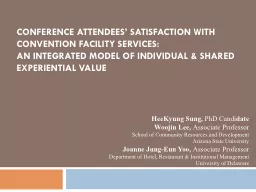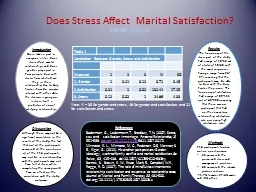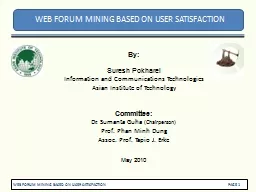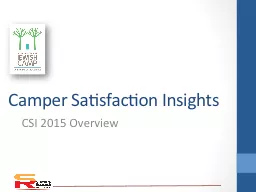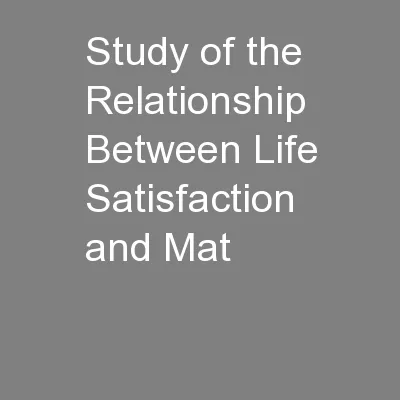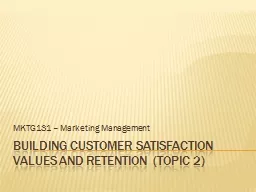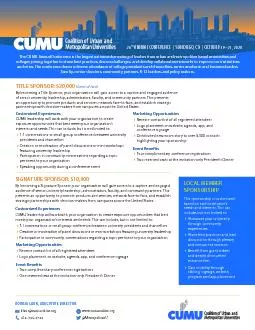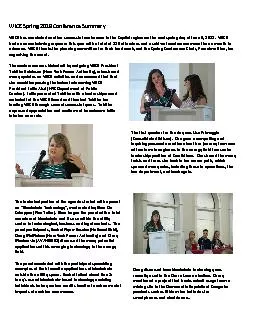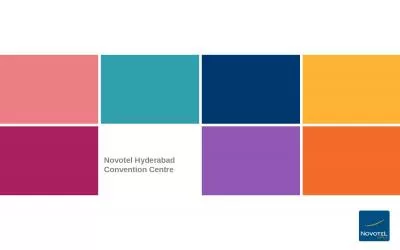PPT-Conference Attendees’ Satisfaction with Convention Facili
Author : tatyana-admore | Published Date : 2017-03-20
An Integrated Model of Individual amp Shared Experiential Value HeeKyung Sung PhD Candi date Woojin Lee Associate Professor School of Community Resources and
Presentation Embed Code
Download Presentation
Download Presentation The PPT/PDF document "Conference Attendees’ Satisfaction wit..." is the property of its rightful owner. Permission is granted to download and print the materials on this website for personal, non-commercial use only, and to display it on your personal computer provided you do not modify the materials and that you retain all copyright notices contained in the materials. By downloading content from our website, you accept the terms of this agreement.
Conference Attendees’ Satisfaction with Convention Facili: Transcript
Download Rules Of Document
"Conference Attendees’ Satisfaction with Convention Facili"The content belongs to its owner. You may download and print it for personal use, without modification, and keep all copyright notices. By downloading, you agree to these terms.
Related Documents

